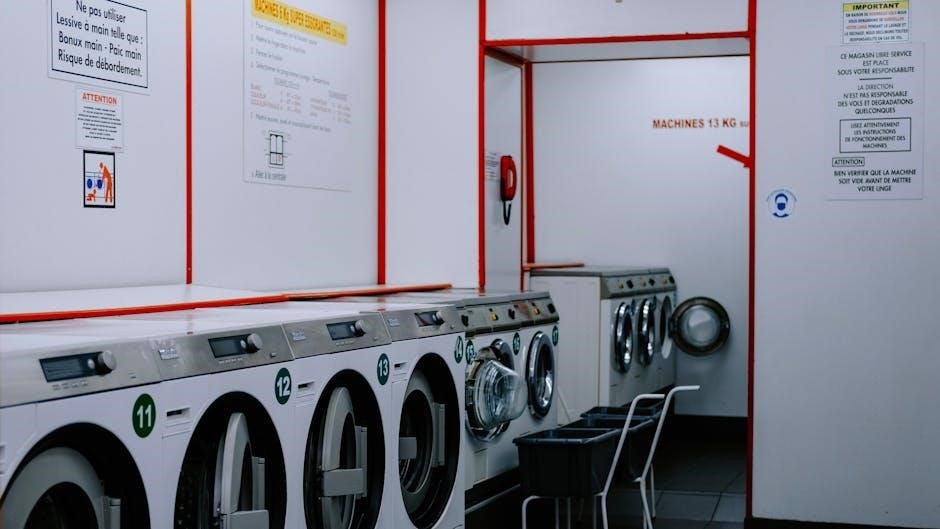Bionicle instructions guide fans through building intricate LEGO figures, blending creativity with step-by-step precision. These manuals are essential for constructing iconic sets like Toa Mata and Rahkshi, ensuring accuracy and enjoyment. They also foster problem-solving skills and imaginative play, making them a cornerstone of the Bionicle experience.
1.1 What Are Bionicle Instructions?
Bionicle instructions are detailed guides provided by LEGO to help users assemble and build specific Bionicle sets. These instructions typically include visual diagrams, step-by-step directions, and symbols to ensure the correct assembly of complex pieces. They are designed to be user-friendly, catering to both new and experienced builders. Bionicle instructions often come in printed booklets or digital formats, offering a clear roadmap for constructing intricate characters and vehicles. By following these guides, fans can bring their Bionicle figures to life, ensuring accuracy and enjoyment. The instructions also highlight unique elements and mechanisms, making them an essential resource for understanding the design and functionality of each set.
1.2 Importance of Following Bionicle Instructions
Following Bionicle instructions is crucial for ensuring the correct assembly of complex LEGO sets. These guides provide clear, step-by-step directions and visual aids, helping builders avoid mistakes and understand intricate mechanisms. By adhering to the instructions, fans can achieve the intended design and functionality of their Bionicle figures. Proper assembly also enhances playability and display value, making the building process more enjoyable. Additionally, instructions help users identify all included parts, reducing the risk of losing pieces. They are especially valuable for younger or less experienced builders, offering a structured approach to creating these unique LEGO characters and vehicles. Ultimately, Bionicle instructions are essential for unlocking the full potential of each set and ensuring a satisfying building experience.
1.3 Brief History of Bionicle Sets
Bionicle sets, introduced by LEGO in the early 2000s, revolutionized buildable action figures with intricate designs. The first sets, such as the Toa Mata, debuted in 2001, featuring elemental warriors. Over the years, the series expanded with Rahkshi, Bohrok, and Visorak sets, each adding unique characters and storylines; The theme became known for its blend of creativity and storytelling. By 2010, the original series concluded, but its legacy endured. In 2015, LEGO reintroduced Bionicle with new sets like Tahu ‒ Master of Fire, reigniting fan interest. However, the reboot was short-lived, ending in 2016. Bionicle remains a beloved and iconic part of LEGO history, cherished by fans for its innovative approach to building and storytelling.

Understanding Bionicle Instructions
Bionicle instructions provide clear, step-by-step guides for assembling complex figures. They include visual diagrams, symbols, and detailed part lists to ensure accurate and enjoyable building experiences.
2.1 Visual Guides and Diagrams
Visual guides and diagrams in Bionicle instructions are essential for understanding the assembly process. These detailed illustrations depict each step, showcasing how pieces connect and form the final figure. Symbols and icons highlight specific actions, such as part rotations or connections, ensuring clarity. Color-coded elements and numbered components simplify identification, while exploded views reveal internal structures. These visuals cater to all skill levels, making complex builds manageable. They also enhance the learning experience, teaching spatial reasoning and mechanical concepts. Over time, digital versions have emerged, offering interactive 3D models and zoom features for better detail. Together, these tools make Bionicle instructions accessible and user-friendly, fostering creativity and precision in every build.
2.2 Step-by-Step Building Process
Bionicle instructions follow a structured, sequential approach to guide builders through assembly. Each set begins with sorting pieces by type and color, ensuring organization. The instructions then break the build into manageable sections, like limbs, torso, and head, allowing for gradual progress. Numbered parts and symbols help identify components quickly. Detailed diagrams illustrate each step, showing how pieces connect and align. Digital versions enhance this with interactive 3D views. The process fosters problem-solving and mechanical understanding, making it engaging for all skill levels. By following these steps, builders can confidently assemble complex figures, bringing their Bionicle creations to life with precision and creativity.
2.3 Common Symbols and Icons Used
Bionicle instructions utilize a variety of symbols and icons to simplify the building process. Arrows indicate piece orientation, while color-coded circles highlight specific elements. Numbered markers guide the order of assembly, and part identifiers clarify component types. Symbols for joints and connections, like hinges or axles, ensure proper alignment; Digital manuals enhance these with interactive tools, such as zoom and rotate features. Universal symbols, like “X” for removal, are consistent across sets. These visual cues help builders of all ages navigate complex designs efficiently, making the instructions accessible and user-friendly. Mastering these symbols is key to a smooth and enjoyable Bionicle building experience.

Types of Bionicle Sets
Bionicle sets include Toa Mata, Rahkshi, Bohrok, Bohrok-Kal, and Visorak, each featuring unique designs and characters. These sets showcase intricate builds and imaginative storytelling, appealing to fans worldwide.
3.1 Toa Mata Sets
The Toa Mata sets, released in 2001, are the original Bionicle figures, introducing six elemental heroes: Tahu (fire), Gali (water), Lewa (air), Kopaka (ice), Pohatu (earth), and Onua (earth). Each Toa Mata features a unique design, with intricate details and masks representing their elemental powers. These sets were groundbreaking, combining buildable figures with storytelling, and became the foundation of the Bionicle universe. The Toa Mata sets included weapons, masks, and a collectible Kanohi, enhancing playability and customization. Their simplicity and iconic designs made them beloved by fans, setting the stage for future Bionicle iterations. These sets remain timeless, appealing to both children and collectors alike, and are often sought after for their nostalgic value and historical significance in the LEGO Bionicle series.
3.2 Rahkshi Sets
The Rahkshi sets, introduced in 2003, represented the primary antagonists of the Bionicle universe, each embodying a unique power such as stealth, strength, or agility. These sets featured intricate, insect-like designs with vibrant color schemes, enhancing their menacing appeal. Each Rahkshi included a Kraata, the source of their power, adding depth to their construction and play value. The building process emphasized posability and complex joint systems, allowing for dynamic poses and customization. The Rahkshi sets were popular among fans, offering a fresh challenge and expanding the Bionicle narrative. Their release marked a significant expansion of the Bionicle universe, introducing new themes and adversaries, while maintaining the series’ signature blend of creativity and storytelling.
3.4 Bohrok and Bohrok-Kal Sets
The Bohrok and Bohrok-Kal sets, released in the early 2000s, introduced insect-like creatures to the Bionicle universe. These sets featured interchangeable parts, allowing fans to customize their builds. The Bohrok were known for their hive-mind behavior, while the Bohrok-Kal were their elite counterparts, offering unique powers. Instructions for these sets emphasized intricate details and complex joint systems, enhancing their posability. Collectors appreciated their vibrant colors and unique designs, making them stand out in the Bionicle series. These sets added depth to the Bionicle lore, providing fans with both creative building challenges and engaging storylines. Their popularity endures among enthusiasts, showcasing their lasting impact on the LEGO Bionicle legacy.
3.5 Visorak Sets
The Visorak sets, released in 2005, introduced spider-like creatures to the Bionicle universe. These sets featured intricate designs with dual-colored shells and adaptive tools. The instructions highlighted advanced building techniques, emphasizing detailed articulation and unique mechanical features. Fans appreciated the Visorak’s ability to combine with other sets, fostering creativity and customization. Their dark, menacing aesthetic added depth to the Bionicle story, making them highly collectible. The sets’ popularity stemmed from their versatility, allowing builders to create complex, poseable figures. Visorak sets remain a favorite among enthusiasts, offering a challenging yet rewarding building experience that enhances the Bionicle legacy with their distinctive spider-inspired designs and functionality.

Accessing Bionicle Instructions
Official LEGO sources, online archives, and digital apps provide easy access to Bionicle instructions. Fans can search by set number, year, or theme to find and download manuals.
4.1 Official LEGO Sources
Official LEGO sources remain the most reliable way to access Bionicle instructions. The LEGO website offers a comprehensive database where users can search for instructions by set number, year, or theme. Additionally, the LEGO Builder app provides digital versions of these manuals, allowing fans to build on-the-go. Many sets, such as 70787 Tahu ⸺ Master of Fire and 8811 Toa Lhikan & Kikanalo, have their instructions readily available through these official channels. LEGO ensures that these guides are accurate and up-to-date, making them indispensable for both new and experienced builders. This accessibility helps preserve the legacy of Bionicle sets for future generations of fans.
4.2 Online Databases and Archives
Online databases and archives serve as invaluable resources for accessing Bionicle instructions. Websites like ManualsLib and dedicated LEGO fan communities offer extensive collections of downloadable PDF manuals. These platforms catalog instructions by set number, year, and theme, making it easy to locate specific guides. For instance, sets like 71316 Umarak the Destroyer and 70787 Tahu ‒ Master of Fire are readily available. Many archives also include vintage sets, preserving the legacy of Bionicle for collectors. Additionally, fan-contributed databases ensure that even rare or discontinued instructions remain accessible. These online repositories are a testament to the enduring popularity of Bionicle and its dedicated community.
4.3 Digital Building Apps
Digital building apps have revolutionized the way fans engage with Bionicle instructions. The LEGO Builder app stands out as a powerful tool, offering digital versions of instructions for both classic and modern sets. Users can zoom in on intricate details, track progress, and even access 3D models for better visualization. Other apps, like those from fan communities, provide interactive guides and step-by-step videos. These platforms are particularly useful for complex sets, such as Umarak the Destroyer or Tahu ⸺ Master of Fire. By leveraging technology, digital apps enhance the building experience, making it more accessible and enjoyable for fans of all skill levels. They also ensure that instructions remain readily available, even for discontinued sets.

Advanced Building Techniques
Advanced techniques enhance Bionicle builds with complex joint systems and posable features, enabling dynamic and customizable figures. These methods push creative limits for intricate designs.
5.1 Customizing Your Bionicle
Customizing your Bionicle allows for personalized creativity, enabling unique designs beyond the original instructions. Fans often modify figures by swapping masks, weapons, or limbs, creating one-of-a-kind characters. This process encourages experimentation with diverse LEGO parts, blending themes for hybrid builds. Popular methods include repainting pieces, adding rare accessories, or integrating elements from other LEGO series. Advanced customizers use complex joint systems for enhanced posability. The Bionicle community thrives on sharing custom designs, fostering inspiration and innovation. Whether for display or storytelling, customization transforms Bionicle figures into truly personal creations, reflecting individual style and imagination.
5.2 Complex Joint Systems

Complex joint systems in Bionicle sets allow for enhanced poseability and dynamic movement. These intricate designs, often featuring ball-and-socket joints, enable figures to achieve lifelike stances and fluid motion. Builders can experiment with advanced techniques to create customizable articulation, making each Bionicle uniquely expressive. These systems require precise alignment and part selection, showcasing LEGO’s engineering prowess. By mastering these joints, fans can craft highly detailed and functional builds, pushing the limits of creativity. The interplay of mobility and stability in these systems adds depth to Bionicle designs, making them stand out as both toys and collectibles; This focus on articulation has inspired countless custom builds and modifications within the Bionicle community.

5.3 Advanced Posability Tips
Mastering advanced posability in Bionicle builds involves balancing stability with flexibility. Experiment with joint combinations to achieve natural movements, such as bending knees or rotating shoulders. Use axles and gears to create dynamic poses, ensuring parts align seamlessly. Symmetry is key for maintaining balance, especially in complex figures. Incorporate angled pieces to add depth and realism to poses. Test poses incrementally to avoid instability, and refine as needed. These techniques allow for highly expressive builds, enhancing both functionality and aesthetics. By pushing the limits of Bionicle’s modular design, builders can create truly unique and poseable figures that stand out. This level of customization is a hallmark of the Bionicle series, inspiring endless creativity among fans.

Bionicle Instructions for Specific Sets
This section provides detailed building guides for iconic sets like Toa Lhikan, Tahu, and Umarak, ensuring fans can accurately recreate their favorite Bionicle figures with ease.
6.1 Instructions for Toa Lhikan and Kikanalo (Set 8811)
Set 8811 features Toa Lhikan and his loyal Kikanalo, offering a unique building experience. The instructions guide users through constructing both figures, highlighting their posable limbs and intricate designs. Toa Lhikan wields a powerful axe, while Kikanalo features a sleek, metallic aesthetic. The set emphasizes complex joint systems and interchangeable parts, allowing for dynamic poses. Step-by-step diagrams ensure clarity, making it accessible for both novice and experienced builders. Originally released in 2004, the set is now sought after by collectors. Digital versions of the instructions are available online, ensuring fans can rebuild or customize these iconic characters with ease. This set remains a standout in the Bionicle series, blending storytelling with innovative design.
6.2 Instructions for Tahu ⸺ Master of Fire (Set 70787)
Set 70787, Tahu ‒ Master of Fire, is a standout Bionicle figure released in 2015. This set features Tahu with his iconic Fire Blade and posable limbs. The instructions guide builders through assembling Tahu’s robust frame, emphasizing his fiery design and dynamic poseability. With 40 pieces, the set is moderately complex, offering a satisfying build experience. The instructions are clear, with detailed diagrams for each step; Digital versions are available online, making it easy for fans to access and rebuild. Tahu’s design highlights his role as a protector, blending strength and agility. This set is popular among collectors and fans, showcasing the essence of Bionicle’s innovative design and storytelling. It remains a beloved addition to the Bionicle legacy, inspiring creativity and admiration.
6.3 Instructions for Umarak the Destroyer (Set 71316)
Set 71316, Umarak the Destroyer, is a compelling 2016 Bionicle release featuring 207 pieces. This intricate set captures Umarak’s imposing presence with unique design elements that reflect his destructive role. The instructions guide builders through constructing his robust frame, emphasizing his menacing aesthetic and enhanced posability. Digital instructions are available, offering a seamless building experience. Umarak’s detailed design and adaptability make him a standout in the Bionicle series, appealing to both seasoned builders and enthusiasts of the lore. His significance in the narrative, combined with the engaging build process, renders this set a cherished addition among fans and collectors alike.

Maintenance and Storage Tips
Regular cleaning, proper storage solutions, and organized LEGO parts ensure your Bionicle sets remain in pristine condition, maintaining their value and display quality over time.
7.1 Cleaning Your Bionicle Sets
Cleaning your Bionicle sets is essential to maintain their condition and appearance. Start by disassembling the figure to access all parts; Use a soft-bristled brush to remove dust and debris from intricate details. For tougher dirt, dampen a cloth with mild soap solution, but avoid submerging pieces in water. Never use harsh chemicals or abrasive materials, as they can damage the LEGO elements. After cleaning, allow all parts to air dry completely before reassembling. Regular cleaning prevents grime buildup and ensures smooth joint movement. For stubborn stains, a cotton swab dipped in mild detergent can be used. Always handle small parts with care to avoid loss. Cleaning regularly helps preserve your Bionicle sets for long-term enjoyment and display.
7.2 Proper Storage Solutions
Proper storage is crucial to maintain the condition and organization of your Bionicle sets. Use original LEGO canisters or airtight containers to keep parts secure and dust-free. Label each container to easily identify its contents. For larger collections, consider using storage boxes with dividers to separate sets or themes. Keep sets away from direct sunlight and moisture to prevent discoloration or damage. Avoid throwing loose parts into a container, as this can cause scratches or loss. Store instructions in protective sleeves or folders to preserve them. Organizing your Bionicle sets this way ensures they remain intact and ready for future builds or display. Investing in proper storage solutions protects your collection and enhances your overall LEGO experience.
7.3 Organizing Your LEGO Parts
Organizing your LEGO parts is essential for efficient building and maintenance. Use sorting trays or compartmentalized containers to categorize pieces by type, color, or size. This system helps quickly locate specific elements, saving time during construction. Label each compartment clearly to ensure easy access. For small parts like studs or gears, utilize small ziplock bags or mini containers. Consider a modular storage system that can be expanded as your collection grows. Regularly clean and inspect your parts to remove dust or debris. Store larger elements like frames or limbs separately to prevent bending. Organizing your LEGO parts meticulously enhances your building experience and keeps your Bionicle collection in pristine condition for years to come.

The Bionicle Community
The Bionicle community is vibrant and creative, with fans sharing ideas, participating in contests, and showcasing custom builds. Their shared passion fosters collaboration and inspiration.
8.1 Fan-Created Bionicle Instructions
Fan-created Bionicle instructions have become a cornerstone of the community, showcasing creativity and innovation. Enthusiasts design custom sets, share digital blueprints, and inspire others to experiment with unique builds. These instructions often include intricate designs, such as modified versions of iconic figures like Umarak the Destroyer or Toa Lhikan. Fans also create step-by-step guides for entirely new characters, blending traditional Bionicle elements with modern LEGO innovations. Online platforms host these creations, allowing builders to download PDF manuals or follow visual tutorials. This collaborative spirit fosters a sense of camaraderie, encouraging fans to push the boundaries of what Bionicle can be. The result is a constantly evolving library of user-generated content that celebrates both nostalgia and creativity.
8.2 Community Challenges and Competitions
The Bionicle community thrives on creativity, with numerous challenges and competitions that inspire innovation. Fans often participate in building contests, creating unique figures or scenes that showcase their skills. These events, hosted on forums and social media, encourage participants to push the limits of Bionicle design. Themes range from recreating iconic sets to inventing entirely new characters. Digital platforms like LEGO Builder apps and online databases provide resources for contestants to refine their craft. Winners are celebrated for their originality and technical prowess, fostering a sense of achievement and camaraderie. These competitions not only highlight the versatility of Bionicle but also serve as a platform for fans to share ideas and gain recognition within the community.
8.3 Popular Bionicle Forums and Groups
The Bionicle community is vibrant, with numerous forums and groups where fans gather to discuss their passion. Platforms like ManualsLib, Reddit, and specialized LEGO forums host extensive discussions on Bionicle sets, instructions, and custom creations. These spaces allow enthusiasts to share tips, showcase their builds, and collaborate on projects. Many groups also organize events and contests, fostering a sense of unity among fans. Online databases and archives, such as those mentioned earlier, provide valuable resources for builders. These forums are instrumental in preserving the legacy of Bionicle, ensuring its community remains active and engaged. They serve as a hub for both seasoned collectors and new fans discovering the series.
Bionicle instructions remain indispensable for fans, offering precise guidance and sparking creativity. Their enduring popularity underscores the timeless appeal of the LEGO Bionicle universe and its community.
9.1 Final Thoughts on Bionicle Instructions
Bionicle instructions have proven to be an essential guide for fans, helping them unlock the full potential of their LEGO sets. These manuals not only provide step-by-step clarity but also inspire creativity and problem-solving skills. From the original Toa Mata to the complex Umarak the Destroyer, the instructions have been a cornerstone of the Bionicle experience. They allow builders to explore intricate designs, joint systems, and customization options, fostering a sense of accomplishment with each completed model. The availability of both physical and digital formats ensures accessibility for all generations of fans. Moreover, the community’s dedication to preserving and sharing these instructions highlights the enduring legacy of the Bionicle series, making it a beloved part of LEGO history.
9.2 Encouragement to Explore More Sets
Exploring more Bionicle sets offers a world of creative possibilities and challenges. From the classic Toa Mata to the intricate designs of Umarak the Destroyer, each set provides a unique building experience. Fans can discover a wide range of characters, each with its own story and features. The LEGO Group and fan communities continue to inspire with both original and custom designs. By diving into new sets, builders can enhance their skills, explore advanced techniques, and enjoy the satisfaction of bringing complex models to life. Whether revisiting vintage collections or embracing newer releases, the Bionicle series promises endless hours of imaginative fun and learning for enthusiasts of all ages.
